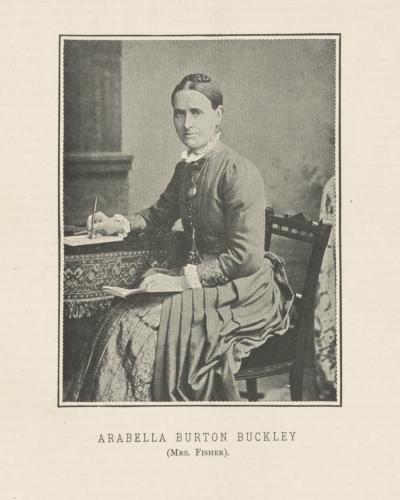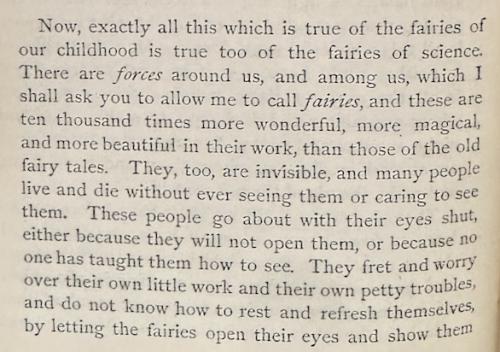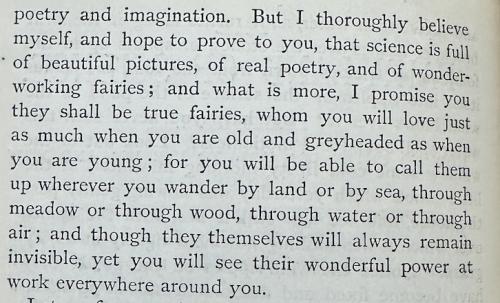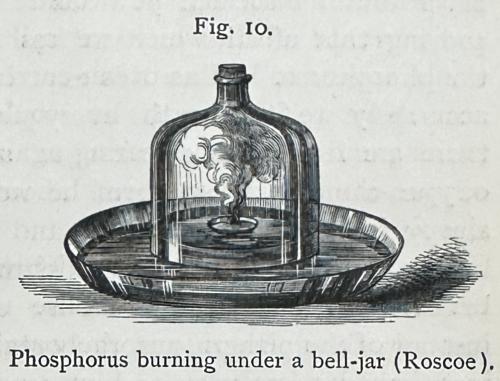Arabella Buckley
Opening the Doors of Science to a New Learner
Arabella Buckley was a major Victorian scientific writer that brought heightened attention to the natural sciences in her work. She became a famous figure for writing about difficult scientific concepts in a way that would engage younger readers. Her most iconic literature production is The Fairy-land of Science in which she writes of the forces that fuel nature as fairies that work at microscopic levels to enchant her young reader. The Fairy-land of Science became a staple piece of literature in Victorian children's science education and continued to be a staple in later generations.
Background
Buckley was born in London in 1840 as the daughter of a vicar (a priest in the Church of England) and a spiritualist mother. Although her Victorian life path was intended for either domestic service, factory work, or household management… she seized the opportunity to pick up a career in scientific literature, as she worked as a secretary for Sir Charles Lyell, a Scottish geologist. Sir Charles Lyell identified her genius through her assistance on his editing and revising, and soon Buckley was taken on and exposed to an esteemed scientific community with closely acquainted relationships to scientists such as Charles Darwin. Buckley was able to use her particular life experiences as a both a woman scientist and daughter of a spiritualist mother to make widely accessible scientific ideas that had previously been intended for a more exclusive audience.
The Fairy-land of Science (1878), in the Rare Books Collection at the University of Utah
Stored and ready to open its magic at the Rare Books Collection here at the University of Utah, located on the fourth floor of the Marriott Library is a first edition of the 1878 production of The Fairy-land of Science produced and published by Edward Stanford. This remarkable novel charms and captivates at first glance with the cover adorned with pastel-hued striations on an oaky background hinting at the wonders within. Once inside this novel, you are met with whimsical illustrations that are meant to bring to life the enchantment of the natural sciences. Whether you have the chance to explore this treasure in person or not, this page aims to introduce you to the spellbinding magic of this extraordinary book, and appreciate the impact it had on Victorian education, making science more exciting and accessible for a younger learner.
If interested in viewing this novel, make an appointment here with the Rare Books Collection.
Theme of Fairies
The theme of fairies appears throughout the novel, including on pages 2 and 6, as depicted in the images on the left and right. Fairies play an integral role in engaging younger, more whimsical minds, fostering curiosity that initiates the exploration of scientific processes—concepts Buckley later elaborates on. By using fairies as a vessel to introduce scientific ideas, this book makes learning more accessible and enjoyable, effectively familiarizing younger readers with novel concepts.
Whimsical Illustrations
The illustrations throughout this novel are crafted to inspire and invigorate the reader's imagination, much like a classic fairytale. In the image on the left, a group of explorers are depicted identifying a glacier and observing the weathering it has caused to the surrounding landscape. By incorporating explorers into this illustration, Buckley subtly encourages readers to envision themselves as future explorers, emphasizing that with enough knowledge of the natural sciences, they too can embark on such adventures. This approach reinforces the importance of engaging with the book's content seriously and enthusiastically.
On the image on the right we see an illustration explaining a chemical reaction of phosphorus with oxygen and how when phosporus burns, it leaves behind only nitrogen. In Buckley's scientific description of this process, it may be rather overwhelming for a mind that is unfamiliar with these chemical compounds and the way they interact with each other. However, Buckley is able to rely on her illustration to help alleviate some of the confusion in the reader. She not only writes but she draws the information she wants to share, reinforcing the novel's ability to captivate and educate its audience.
Legacy
Arabella Buckley wrote over 16 pieces of literature in regards to the natural sciences and used her knowledge to educate and contribute the the Victorian scientific community. Buckley helped to kickstart the popularity of landing Darwinism in the Scientific Community, as she was one of his earliests supporters. With Buckley pioneering a unique approach to writing and illustrating the natural sciences in a way that captivated children, similar trends emerged in scientific literature over time. Her legacy of blending fantastical exploration with scientific concepts can be presumed to influence later writers such as Beatrix Potter, author of The Tale of Peter Rabbit, and Gerald Durrell, with My Family and Other Animals. Buckley's work not only inspired scientific writers to explore the intersection of science and storytelling but also established her as a prominent female icon of the Victorian era, challenging the gendered patriarchy of the scientific community and redefining who could contribute to its discourse. Thanks to Buckley, science became a more inclusive subject, opening the doors to a wider audience of young, curious readers.
References
Arabella Buckley: female science writer and early supporter of Darwin – National Library of Scotland Blog. (2023, November 16). Retrieved from Blog.nls.uk website: https://blog.nls.uk/arabella-buckley-female-science-writer-and-early-supporter-of-darwin/
Ashworth, W. (2024). Arabella Buckley. Retrieved December 5, 2024, from The Linda Hall Library website: https://www.lindahall.org/about/news/scientist-of-the-day/arabella-buckley/
Buckley, A. (1878). The Fairy-land of Science (1st ed.). London, England: Edward Stanford.
Hogg, Graham. “Arabella Buckley: Female Science Writer and Early Supporter of Darwin – National Library of Scotland Blog.” Blog.nls.uk, 16 Nov. 2023, blog.nls.uk/arabella-buckley-female-science-writer-and-early-supporter-of-darwin/. Accessed 18 Sept. 2024.
Landow, George. “Victorian Spiritualism.” Victorianweb.org, 2016, www.victorianweb.org/victorian/religion/spirit.html#:~:text=Reports%20of%20this%20event%20first. Accessed 18 Sept. 2024.
Larsen, Jordan. “THE EVOLVING SPIRIT: MORALS and MUTUALISM in ARABELLA BUCKLEY’S EVOLUTIONARY EPIC on JSTOR.” Jstor.org, 20 Dec. 2017, www.jstor.org/stable/26312909?sid=primo&seq=5. Accessed 18 Sept. 2024.
“Richard Somerset, Arabella Buckley and the Feminization of Evolution as a Communication Strategy • Issue 7.2 • Nineteenth-Century Gender Studies.” Ncgsjournal.com, 2024, www.ncgsjournal.com/issue72/somerset.html. Accessed 18 Sept. 2024.
Page researched and written by undergraduate Honors student Anika Boyden.
Later edited by Pamalatera C. Fenn






